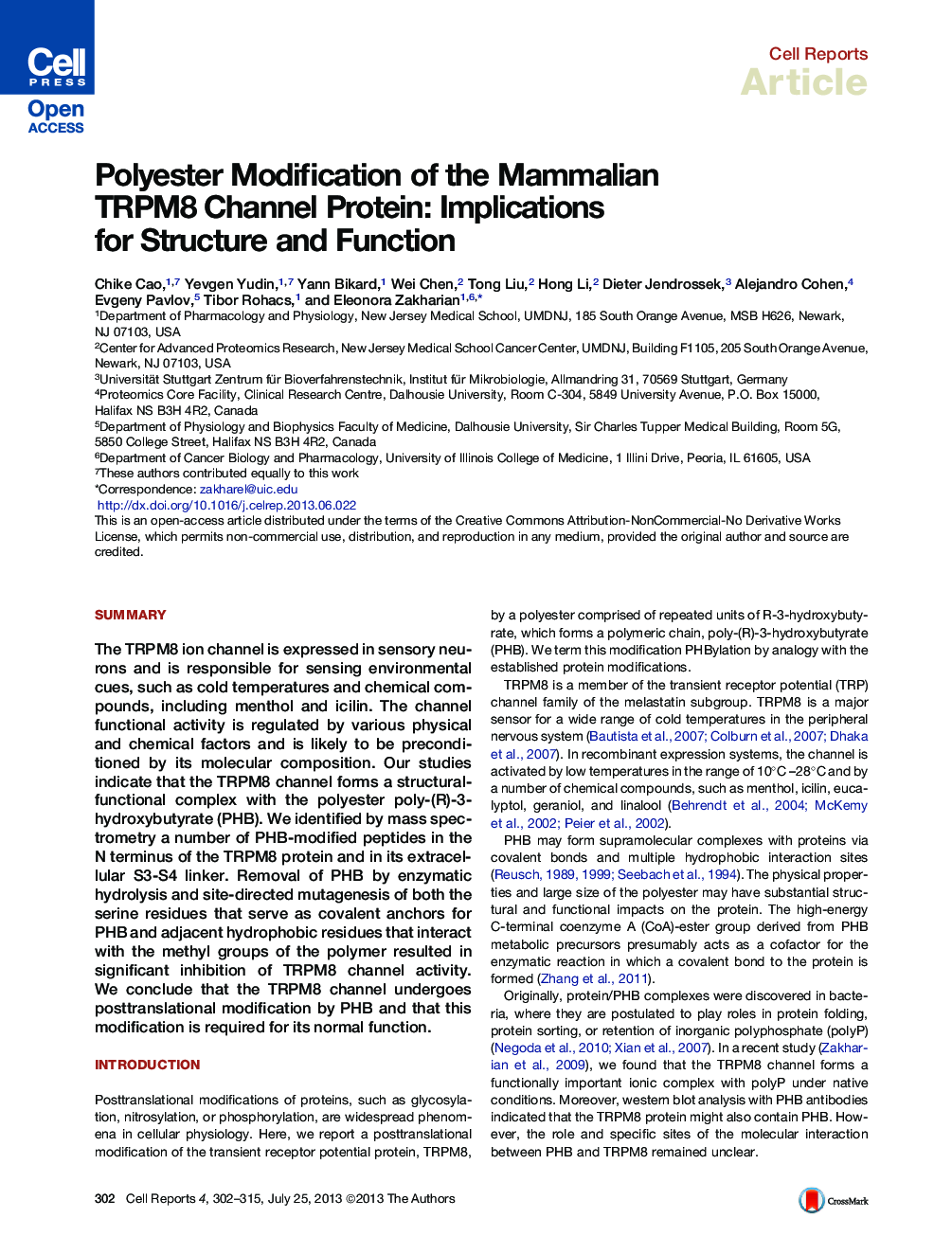| کد مقاله | کد نشریه | سال انتشار | مقاله انگلیسی | نسخه تمام متن |
|---|---|---|---|---|
| 2042053 | 1073184 | 2013 | 14 صفحه PDF | دانلود رایگان |

• Polyester PHB forms a structural/functional complex with TRPM8 ion channel
• Covalent and hydrophobic bonds support PHB modification
• PHB-binding site mutants and PHB depolymerase, PhaZ7, inhibit TRPM8 activity
• Extracellular PHBylation of TRPM8 is required for its function
SummaryThe TRPM8 ion channel is expressed in sensory neurons and is responsible for sensing environmental cues, such as cold temperatures and chemical compounds, including menthol and icilin. The channel functional activity is regulated by various physical and chemical factors and is likely to be preconditioned by its molecular composition. Our studies indicate that the TRPM8 channel forms a structural-functional complex with the polyester poly-(R)-3-hydroxybutyrate (PHB). We identified by mass spectrometry a number of PHB-modified peptides in the N terminus of the TRPM8 protein and in its extracellular S3-S4 linker. Removal of PHB by enzymatic hydrolysis and site-directed mutagenesis of both the serine residues that serve as covalent anchors for PHB and adjacent hydrophobic residues that interact with the methyl groups of the polymer resulted in significant inhibition of TRPM8 channel activity. We conclude that the TRPM8 channel undergoes posttranslational modification by PHB and that this modification is required for its normal function.
Graphical AbstractFigure optionsDownload as PowerPoint slide
Journal: - Volume 4, Issue 2, 25 July 2013, Pages 302–315